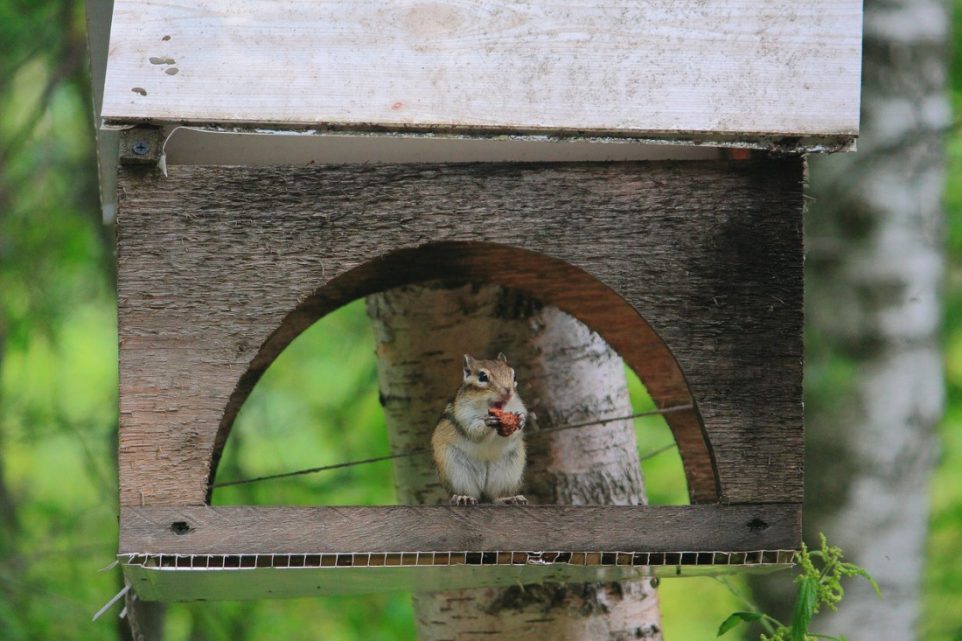How To Build a Squirrel Proof Bird Feeder

Bird feeders bring joy and beauty to our outdoor spaces, but they also often attract unwanted visitors—squirrels. These crafty creatures can quickly empty bird feeders, leaving our beloved feathered friends hungry. However, with a squirrel-proof bird feeder, you can deter those pesky squirrels and provide a safe haven for the birds to dine. In this blog post, we will guide you through the process of building a window bird feeder that is 100% squirrel-proof, allowing you to enjoy the company of the birds while outsmarting the persistent squirrels.
Choose the Right Design
When building a squirrel-proof bird feeder, selecting the right design is crucial. Opt for feeders with mechanisms that prevent squirrels from accessing the food. Examples include weight-activated feeders, caged feeders, or feeders with squirrel-proof baffles. Research different designs and determine which one best suits your needs and budget.
Use Squirrel-Resistant Materials
Selecting the appropriate materials for your window bird feeder can make it more squirrel-resistant. Consider using metal or durable plastic for the main structure, as squirrels are less likely to chew through these materials. Reinforce vulnerable areas with metal mesh or hardware cloth to prevent squirrels from accessing the food.
Position the Feeder Strategically
The placement of your bird feeder plays a significant role in deterring squirrels. Hang the feeder at least 10 feet away from trees, fences, or other structures that squirrels can use as launching points. Position it away from overhanging branches or rooftops that squirrels can jump from. Additionally, consider installing a baffle or squirrel guard below the feeder to prevent squirrels from climbing up.
Incorporate Squirrel-Deterrent Features
Adding specific features to your bird feeder can further discourage squirrels. Use smooth poles or slippery metal pipes to make it difficult for squirrels to climb up. Install a squirrel baffle or cone-shaped guard above or below the feeder to block access. You can also attach a weight-sensitive mechanism that closes off access to the food when a squirrel’s weight is detected.
Regular Maintenance and Monitoring
Maintaining your squirrel-proof bird feeder is essential for its effectiveness. Clean the feeder regularly to prevent mold and bacteria growth. Monitor it for any signs of squirrel activity or damage. Adjust and reinforce deterrent features as needed to stay one step ahead of persistent squirrels.
Common Mistakes
While building a squirrel-proof bird feeder, it’s important to be aware of common mistakes that can compromise its effectiveness.
- One common mistake is underestimating the persistence and ingenuity of squirrels. They are agile climbers and problem solvers, so it’s essential to thoroughly test your feeder design to ensure it truly keeps them at bay.
- Another mistake is using materials that squirrels can easily chew through. Avoid using flimsy plastic or weak mesh that squirrels can easily damage or destroy.
- Avoid placing a feeder too close to trees, structures, or other objects that squirrels can use as launching points.
- Keep the feeder clean, inspect it regularly for any signs of damage or squirrel activity, and make necessary adjustments to reinforce deterrent features.
By avoiding these common mistakes, you can increase the effectiveness of your squirrel-proof bird feeder and ensure that it serves its purpose of providing a safe haven for your feathered friends.
Conclusion
Building a squirrel-proof bird feeder allows you to enjoy the beauty of birds without the interference of pesky squirrels. By selecting the right design, using squirrel-resistant materials, strategic placement, incorporating deterrent features, and maintaining the feeder, you can create a bird-friendly haven while outsmarting squirrels. Embrace the harmony of nature, attract a variety of bird species, and provide them with a safe and squirrel-free feeding experience.